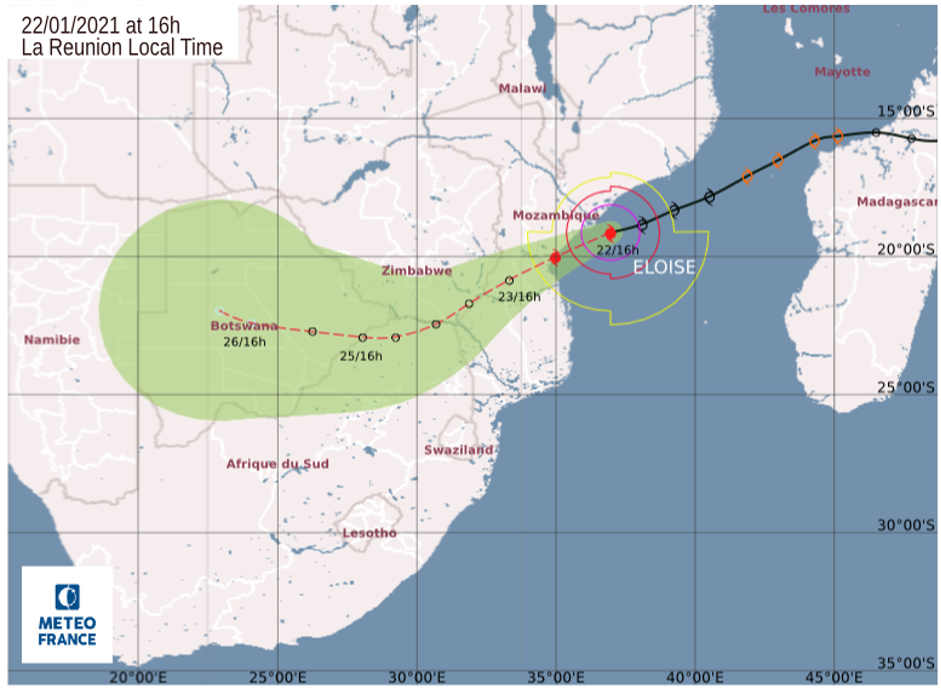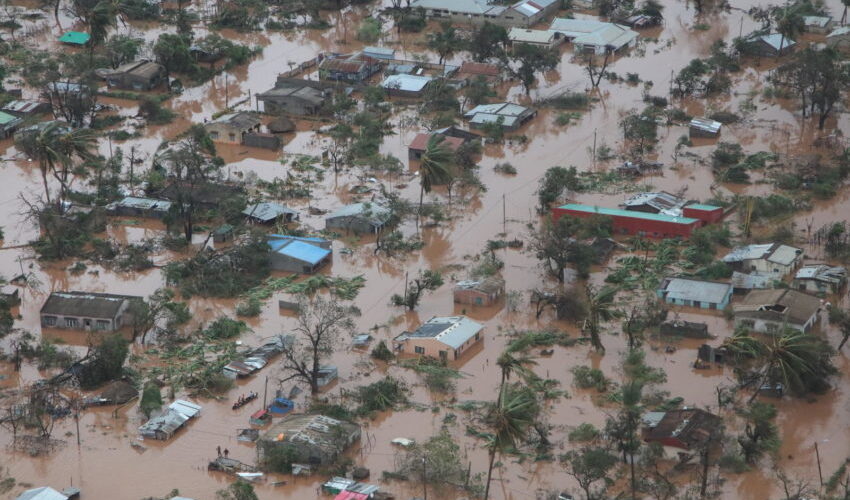The Path of the Tropical Cyclone Eloise: Satellite Image Map: On this page, we discuss the path of tropical cyclone Eloise. Tropical Cyclone Eloise was the strongest tropical cyclone to impact the country of Mozambique since Cyclone Kenneth in 2019 and the second of three consecutive tropical cyclones to impact Mozambique in the 2020–21 South-West Indian Ocean cyclone season.
Tropical Cyclone Eloise was a powerful storm that wreaked havoc across parts of Southern Africa in January 2021. As one of the most destructive cyclones to hit the region in recent years, Eloise caused widespread damage, loss of life, and long-lasting impacts on affected countries. This article delves into the background, development, and aftermath of Tropical Cyclone Eloise, highlighting the importance of disaster preparedness and climate change awareness.
Background and Development of the Tropical Cyclone Eloise
Tropical Cyclone Eloise formed as a low-pressure system in the Indian Ocean on January 14, 2021, and quickly intensified into a tropical storm on January 15. Over the next few days, Eloise continued to strengthen as it moved westward, eventually reaching peak intensity as a Category 2 tropical cyclone on January 22, with maximum sustained winds of 100 mph (160 km/h).
The Path of the Tropical Cyclone Eloise on a Map (Satellite Image Map)

- Eloise developed into a tropical depression on 16 January, and strengthened into a tropical storm on 17 January.
- On the following day, the storm intensified to a severe tropical storm. Late on 19 January, Eloise made landfall in northern Madagascar as a moderate tropical storm.
- The storm traversed the island of Madagascar and entered the Mozambique Channel in the early hours of 21 January.
- After moving southwestward across the Mozambique Channel for an additional 2 days, Eloise strengthened into a Category 1-equivalent cyclone, due to low wind shear and high sea surface temperatures.
- Early on 23 January, Eloise peaked as a Category 2-equivalent tropical cyclone with 10-minute sustained winds of 150 km/h), 1-minute sustained winds of 165 km/h, and a minimum central pressure of 967millibars.
- Shortly afterward, Eloise made landfall just north of Beira, Mozambique, before rapidly weakening into a moderate tropical storm.
- She then moved south-westwards over Zimbabwe and Botswana before dissipating over southern Botswana on 26 January 2021.
Tropical Cyclone Eloise Impact on Southern Africa
Eloise made landfall in central Mozambique on January 23, bringing torrential rainfall and strong winds to the region. The cyclone caused widespread damage to infrastructure, homes, and agricultural lands, resulting in significant loss of life and displacement of communities. Mozambique, Zimbabwe, Eswatini, and South Africa were the hardest hit countries.
Mozambique
The coastal city of Beira, already dealing with the aftermath of Cyclone Idai in 2019, bore the brunt of Eloise’s impact. Heavy rainfall and storm surges led to widespread flooding, damaged infrastructure, and destroyed homes, leaving thousands of people homeless. The floods also affected agricultural lands, exacerbating food insecurity in a country already grappling with economic challenges.
Zimbabwe
Eloise brought heavy rainfall to eastern Zimbabwe, causing rivers to overflow and triggering flash floods and landslides. Infrastructure, including bridges and roads, was severely damaged, isolating communities and hindering rescue efforts. The storm’s impact on agriculture compounded the effects of pre-existing food shortages in the country.
Eswatini
Although Eswatini is a smaller country, Eloise still managed to cause significant damage. Heavy rainfall led to flash floods and landslides, causing damage to homes, infrastructure, and agricultural lands. The storm also disrupted access to essential services, such as healthcare and education.
South Africa
Eloise brought heavy rainfall to northeastern South Africa, causing floods and landslides that damaged roads, bridges, and homes. The storm also had a significant impact on agriculture, particularly the fruit industry, which faced heavy crop losses.
Aftermath and Lessons Learned
The aftermath of Tropical Cyclone Eloise highlighted the vulnerability of Southern African countries to extreme weather events and the importance of disaster preparedness. In the wake of the storm, humanitarian aid poured in from various international organizations, including the United Nations and the World Food Programme, to assist in the recovery process.
Eloise also emphasized the need for better early warning systems, infrastructure improvements, and community-level disaster preparedness strategies. In light of the increasing frequency and intensity of tropical cyclones attributed to climate change, it is essential for countries in the region to invest in climate adaptation and resilience measures.
Conclusion
Tropical Cyclone Eloise was a stark reminder of the devastating impacts that extreme weather events can have on vulnerable communities. As the world grapples with the ongoing challenges of climate change, it is vital to prioritize the development of disaster preparedness strategies and climate adaptation measures to protect lives, livelihoods, and ecosystems in the face of increasingly intense and frequent storms.
Sources
https://public.wmo.int/en/media/news/tropical-cyclone-eloise-hits-mozambique
Subscribe to our email newsletter to get the latest posts delivered right to your email.


Comments